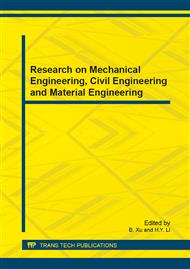p.118
p.125
p.129
p.133
p.140
p.145
p.149
p.153
p.158
An Analysis on Structure Type Selection and Optimization of the Formtraveller for Cantilever Construction
Abstract:
Aiming at the advantages and disadvantages of triangle and rhombic main truss-types and their respective scopes of application, a comparative analysis for the two commonly used truss-type formtravellers has been done. The main factors for analysis are load bearing capability, structural rigidity, steel consumption and working space. It provides a useful reference for the design and selection of the formtraveller. In addition, for the overall deformation of the formtraveller, it is structural optimized while height of column of the truss and suspenders are changed. Finally, the analysis results show the reasonable height of the column and suspender arrangement to achieve the construction target of safety and cost-effectiveness.
Info:
Periodical:
Pages:
140-144
Citation:
Online since:
October 2013
Authors:
Keywords:
Price:
Сopyright:
© 2014 Trans Tech Publications Ltd. All Rights Reserved
Share:
Citation:


